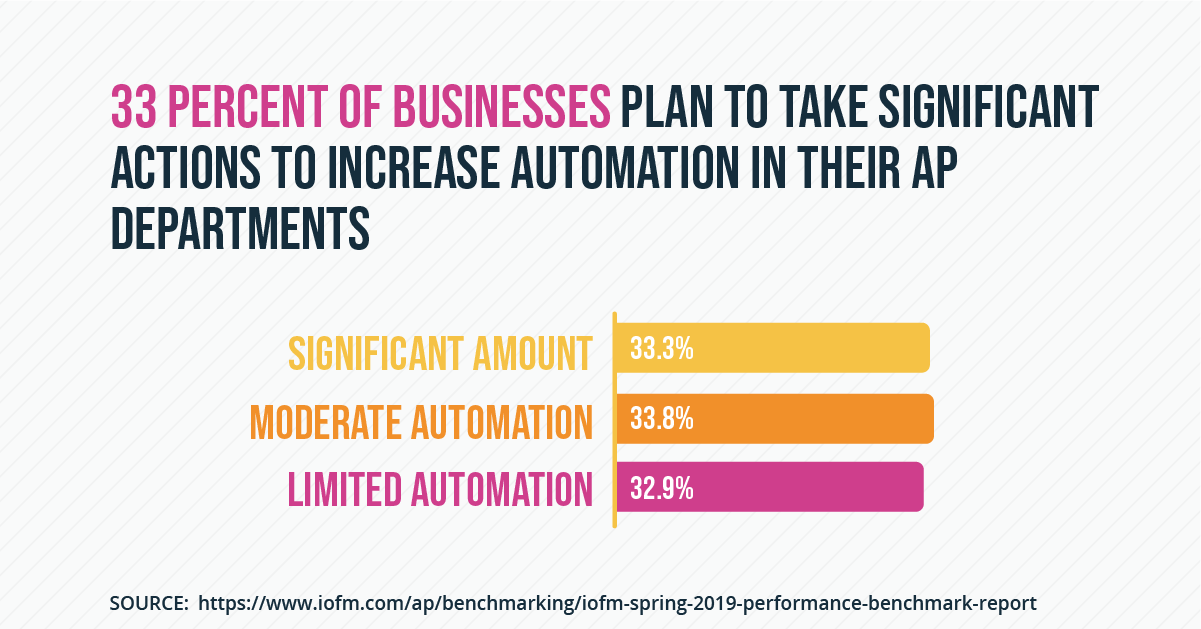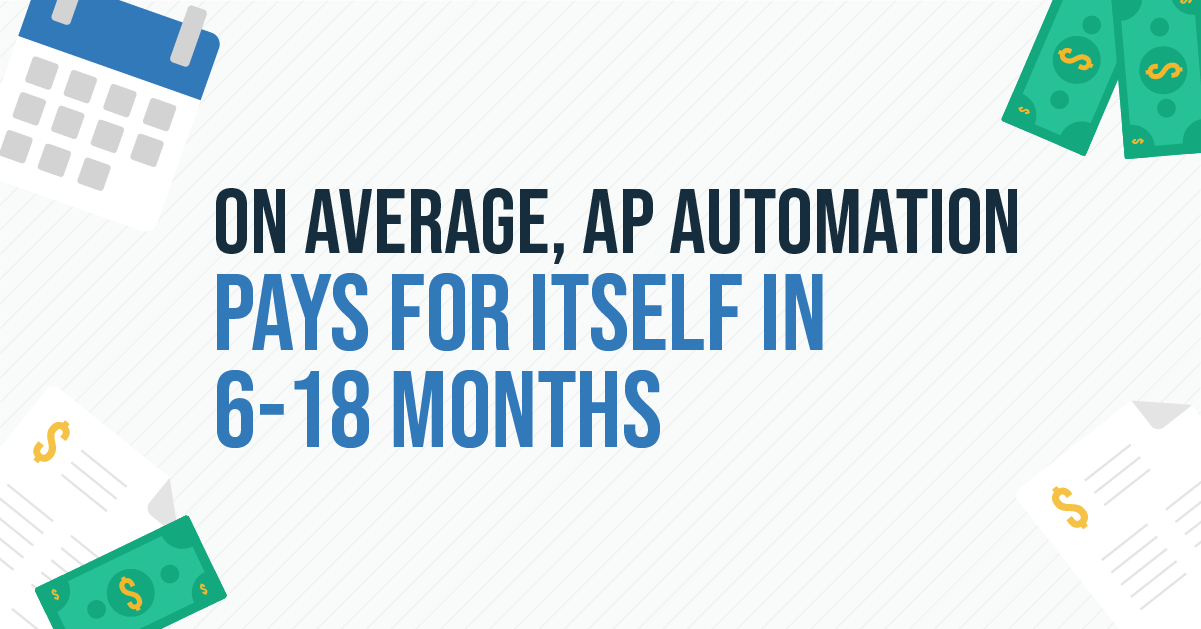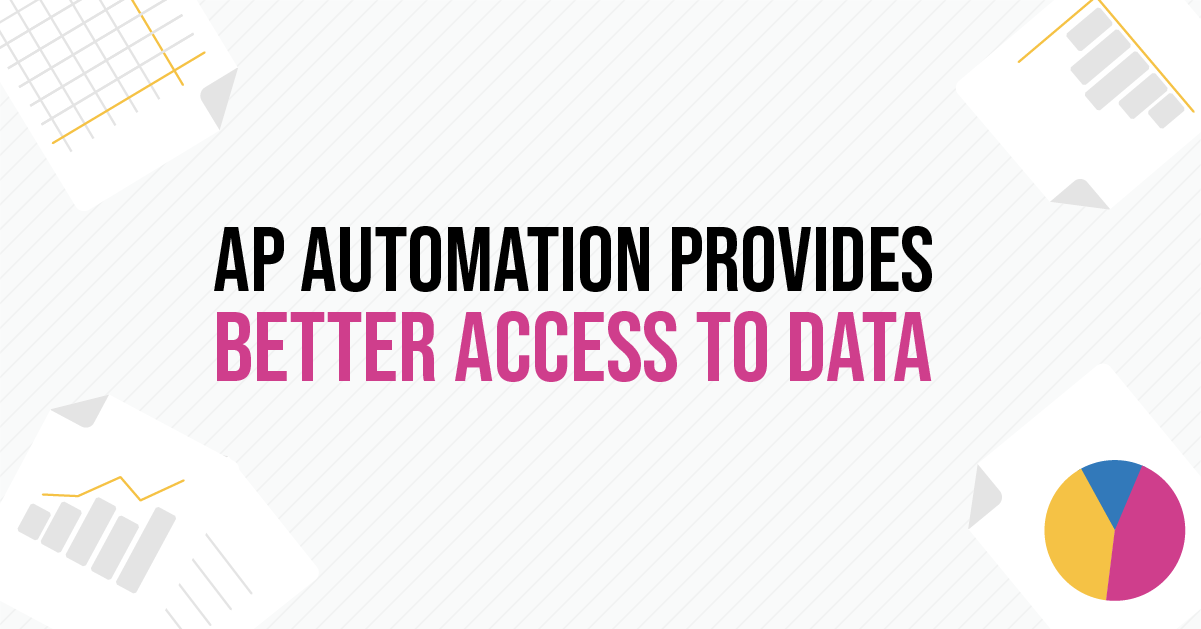The Rise of Strategic Accounts Payable

There is no question that the role of Accounts Payable is shifting. Technology and automation are freeing AP teams from rote administration tasks, which are leading many to question what the future will hold for the industry.
While 40% of today’s jobs are expected to be replaced with automation in the future, this means strategic accounts payable positions will be assisted by automation as these technologies perform the repetitive tasks computers were built to do. Which gives AP the chance to review invoice coding, matched documents, historical invoices, and assigned approvers before sending off for approval.
In the present, the pressure is on for teams to streamline and implement a fully automated workflow, but also to understand the implications of new and emerging software — including the value these solutions can bring for businesses and their stakeholders. Strategic accounts payable is not only on the rise, but it’s adding more control over the invoice management lifecycle and Financial Controllers are taking notice along with AP staff.
The Evolution of the AP Process
The role of accounts payable in most companies seemed relatively straightforward in the past. They were responsible for tightly managing payment processes, such as invoices and payments.
Automation is drastically changing the AP process by freeing teams from administrative tasks to play a far more significant role in shaping the direction and health of the entire organization. This post highlights the trends driving this shift and explains the vast benefits that come with a proactive, strategic AP focus rather than a passive role.
Before diving into the most recent trends, let’s take a look back at recent changes in the AP field and how those shifts impact where we are heading.
The Manual AP Process
In the 1970s and 1980s, accounts payable was largely administrative. Invoices were written by vendors and delivered to businesses manually, either in person or by mail. This, of course, created complications. Invoices could get lost in the mail, misplaced by secretaries, or sit in an inbox for weeks. There was no reliable way to track what invoices had been received — or even which had already been paid.
As a result, running a successful AP department was incredibly time- and labor-intensive. Tracking trends or data was nearly impossible, and late payments and poor vendor relationships were often the norm rather than the exception.
The Rise of Tech in AP
In the 1990s, as computers and software became more affordable, many AP departments went digital — at least partially. Software systems made it easier to track invoices and catch late payments. AP departments became far more streamlined and began to focus on cutting costs and increasing efficiency. At the time, it was a huge shift. However, the more things change, the more they say the same — at least when it comes to invoicing.
While digital payments reduced the number of physical checks, billing remained largely paper-based. When companies did use a software program, the formats were often not standardized, which meant businesses might receive invoices digitally, yet still have to enter them into their system manually. That, of course, left companies vulnerable to mistakes.
The Introduction of Automation Software in AP
The turn of the century saw the rise of cloud technology and Software as a Service (SaaS). This new model gave businesses far more flexibility, as programs became lighter and could even be used on mobile devices.
With SaaS models, AP automation software went mainstream. These programs had the power to handle invoice processing, follow approval workflows, and even make payments. Many businesses began using automation to reduce AP workloads and streamline the process.
The Rise of Machine Learning
Then, in 2017, an AI bot named AlphaGo beat a Chinese grandmaster at an ancient strategy called Go. AlphaGo’s win was one of the first widely-seen examples of machine learning, where a machine was able to do more than just follow programming, but also make new connections.
Today, machine learning is helping create a more efficient and more strategic accounts payable process. For example, send a notifiction when a vendor updates their address so that AP staff can review and check for possible fraud. Over time, machine learning allows AP automation software to learn how you work and make the process easier by spotting patterns and helping you identify opportunities otherwise not detectable before.
Rising Trends In AP Management
The rise in technology, including machine learning, is having a massive impact on the way businesses build and run their AP departments. There is pressure on companies to understand how new and emerging technologies and trends may impact the way the AP department contributes to the rest of the business. Here are trends firms need to understand the role of AP shifts.
- Artificial Intelligence is Becoming a Necessity: In 2019, accounts payable automation is no longer a luxury for the largest corporations. In fact, a recent report by report by the IOFM found most organizations are working to increase the amount of automation in the AP department. While AI and automation technologies have already entered every other department, firms that don’t leverage these emerging technologies in AP will start to fall behind.

- The Cloud Is the New Normal: Cloud storage has become popular in recent years; in fact, your website and email are likely already residences of the cloud. For accounts payable, however, the cloud offers significant advantages, including increased security, easy access for audit, affordability, and improved reporting capabilities.
- Better Data Analysis: AI and machine learning allow businesses to better use the data they gather. A recent report found that 73% of the data businesses collect goes unused. Advanced automation makes it far easier to use data to predict cash flow, suggest coding and distribution for non-PO invoices, and even detect fraud.
- Increased Focus on the Value That AP Delivers: Over the last few years, accounts payable has shifted from an administrative function to a strategically important source for business-critical financial data. Automation can provide businesses with data about spending, cash flow management, working capital, as well as strategic sourcing.
- A Shift in Skills for AP Staff: As AP transitions from a back-office function to a strategic source of information, accounts payable staff will require different skills. In the future, accounts payable may compete with top tech companies to recruit talent with skills like coding and data analytics.
The Major Benefits of Accounts Payable Automation Strategies
In the past, many AP departments were manual, slow, and reactionary. They fixed issues as they arose instead of actively seeking out solutions. The times have changed
New technologies like artificial intelligence, machine learning, and digital payments are helping to revolutionize the AP process. Businesses that stick to manual processes are going to be left behind, and not just due to bloated payroll.
AP automation and machine learning software are transforming AP from a back office admin role to a source of strategic data that can drive financial decisions. Let’s explore all the benefits
Save Time
Many businesses have moved from manual AP processes to digital. Yet an electronic process is not necessarily an automated one. Many firms receive invoices electronically, but input them manually or even print them out.
Artificial intelligence, however, can virtually eliminate manual entry. For example, Stampli’s AI can gather invoice details, generate it, and is even smart enough to automatically assign approvers and compare the invoice to previous invoices to prevent duplications.
Cost Reductions
Manual processes take time, but they also cost real money. For example, most suppliers offer early pay discounts if businesses can remit payment in a week or two. How much would your company save if you saved 3% on invoices?

With manual AP processes, businesses are often unable to get the approvals and verifications done in time to earn early pay discounts. Using software for AP automation, invoice communication is centralized and can even send out reminders to specific users to add additional information or approve an invoice. This translates time savings into cost savings.
Better Organization
When it comes to the AP function, automation improves process organization dramatically. No more waiting for approved invoices that got buried at the bottom of a manager’s inbox. AP automation also makes it far easier to track invoices, POs and receiving documents, or requests for additional information. All communication for an invoice is in one location online, which makes the verification and approval process easier for anyone just joining the conversation.
Better organization can also improve the audit process by keeping all communications, files, and approvals in one easy to search location.
Reduce Errors & Fraud
Errors are common in manual AP processes, primarily due to human error, lost papers, and, sometimes, outright fraud. Mistakes slow down invoice processing and increase the chances of overpaying or underpaying, and even double payments.
A switch from paper to digital payments can certainly help, but merely moving to digital alone does not remove the threat of fraud or errors entirely. A fully automated AP process provides access to critical, real-time data, making it far easier to spot and respond to issues as they arise. Automation also helps hold each person accountable for the actions they take, which can prevent fraud.
Focus on More Strategic Work
Paper processing requires filing, printing, storing, and even physically delivering paperwork to stakeholders. Moving to a digital process helps accelerate invoice approvals and improve accounts payable efficiency. This allows managers to shift staff from low-level tasks such as writing and mailing checks to more strategic efforts.
But, AP automation software offers an additional benefit. Manual processes prevent businesses from accessing data in real-time. For example, it is challenging to understand current cash flow or to make projections with missing data.

With more time and better data visibility, the focus of the AP department can shift towards more strategic financial tasks such as:
- Uncovering bottlenecks in the AP processes
- Locating cost-cutting opportunities
- Improving the audit process
- Analyzing vendor selections for cost savings
- Negotiating better rates or payment terms
In addition, the data gathered by AP can be integrated into financial management for faster and more accurate reporting as well as more precise decision making (i.e. strategic accounts payable).
Conclusion
The world of AP is changing. The days of carbon-copied invoices languishing in inboxes are gone. And while many businesses have begun using SaaS tools to streamline processes, like purchasing, invoice processing, and payment, many have not fully embraced the benefits of AP automation.
The initial benefits from automating AP tasks are undoubtedly significant; however, once day-to-day processes have been streamlined, AP leaders must work to uncover new ways to demonstrate value through. With more time and better data, strategic accounts payable departments are poised to become a source of key financial data.
